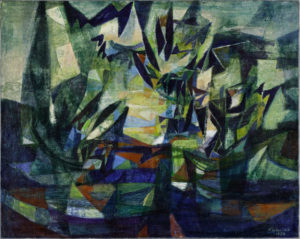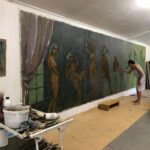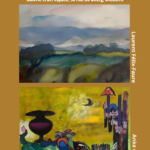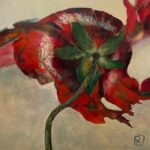André Lhote and some of his followers “You need to be dazzled to see well”
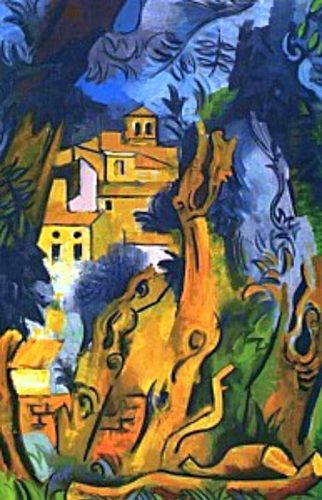
MIRMANDE
In 1925 while he was staying at Livron, a little town in the Rhone Valley, André Lhote, an internationally renowned painter, discovered the village of Mirmande higher up in the hills. It was love at first sight. He describes what he saw as “an enormous pyramid-shaped village lost to memory and destined to a certain death.” The place was falling into ruins and it looked as though its inhabitants were all gone. “The only corner” he wrote “where one can find traces of human life is in the graveyard.” Records mention the fortified village of Mirmande as early as 1238. It became a thriving silk centre in the 18th and 19th centuries but the industry was to suffer a sharp decline when the production of synthetic materials took over. Most of the inhabitants departed and roofless houses being exempted by law from paying taxes they were torn down, thus accentuating the general aspect of decay of the village. It would prove a godsend when the village was rediscovered as houses in such a sorry state were up for sale for next to nothing.
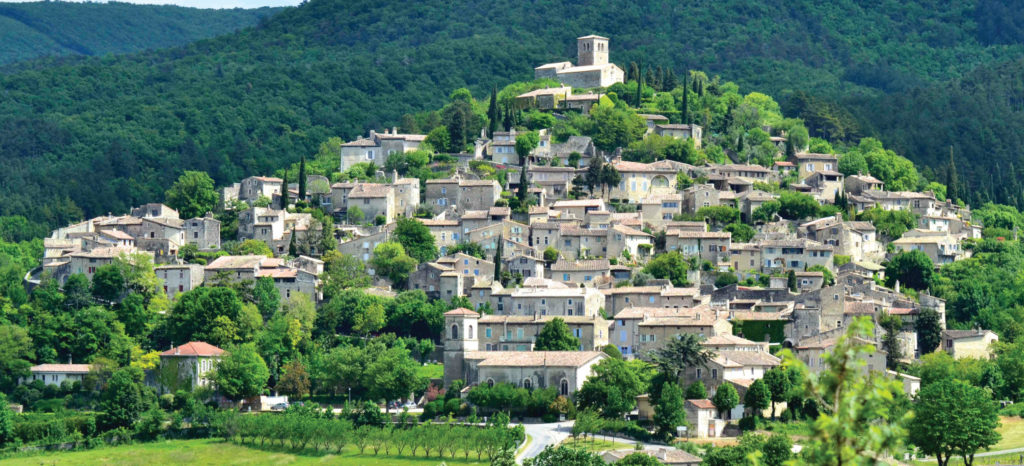
André Lhote’s eye for beauty, however, immediately perceived the potential of such a location for a painter: the view over the valley with the broad expanse of the Rhone in the distance, the glowing hills in which the village is set, the backdrop of angular mountains, the graphic patterns of land under cultivation and blossoming orchards. It is hardly surprising he was deeply impressed. As a painter he had adopted Cubism that had been introduced shortly before by Bracque and Picasso. It was a major breakthrough, one of the most important art movements of the 20th century since the Italian Renaissance 500 years earlier when artists learned how to use linear perspective to create depth. Cubism took painting a step further by mixing different elements of the same subject so that the shapes and parts are seen from front and back giving the sensation of three-dimensionality. From a pictorial point of view la Drôme in general is an illustration par excellence of Cézanne’s famous precept of how nature can be treated by means of the cylinder, the sphere and the cone. These geometrical forms exist in profusion in and around Mirmande, in the architecture of the village as well as in the relief of the surrounding area. Having stated “you need to
be dazzled to see well” it is hardly surprising that André Lhote concluded the place was just waiting for artists to set up their easels and paint. He decided to buy a house in Mirmande, a large 17th century building that had remained undamaged in which he planned to spend the summer seasons. His example was soon followed by other artists who were members of his circle and their arrival in Mirmande heralded the rebirth of the village.
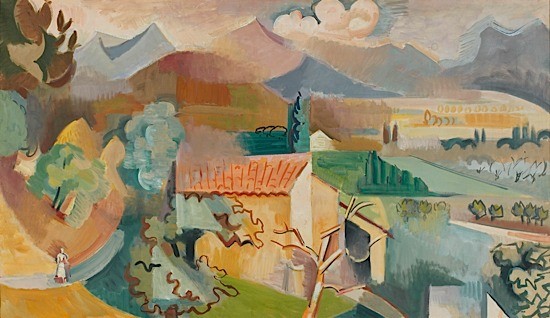
Lhote
In the beginning André Lhote was a Fauve painter before shifting to Cubism in 1912 becoming one of its most influential proponents as well as an art critic who lectured in France and abroad in Belgium, Italy, England, and even in far away Brazil. His writings on landscape and figure painting in which he develops his theories on this new form of visual language are regarded as milestones by art historians. In 1922 he founded the André Lhote Academy in Paris to which a large number of already well established artists as well as pupils adhered. Among them, the famous photographer Henri Cartier-Bresson who started off as a painter, the Dutch sculptress Charlotte van Pallandt, the Polish painter Tamara de Lempicka and many others. Soon after having settled in Mirmande André Lhote set up a summer school at his home, la Capitelle (now a popular café-restaurant.) Its reputation grew and more artists came and bought houses bringing new life to the village while making names for themselves in France, and in some cases beyond the national borders. As a result within a few years Mirmande became a major centre of the arts.
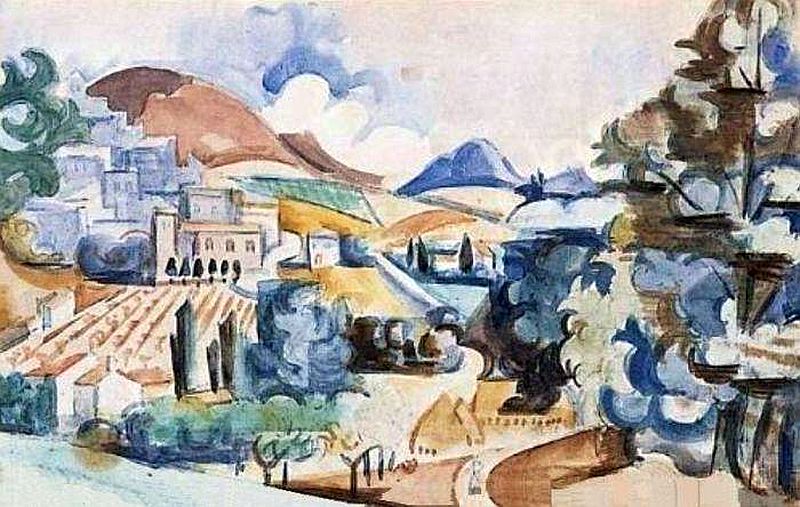
Lhote
Slideshow of various works of André Lhote
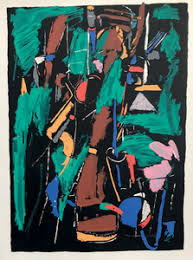
Landskoy
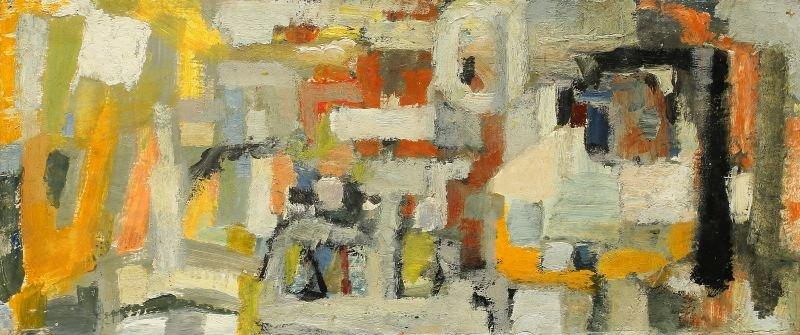
Garbell
A new wave of artists arrived including Jewish refugees at the outbreak of the Second World War thus increasing their number. Some were destined to become very well known like the Russians Alexandre Garbell (1903-1970) and André Landskoy (1902-1976). The former painted in a light and free style and often exhibited his works abroad as did his fellow countryman who is mainly known for his coloured abstract works.
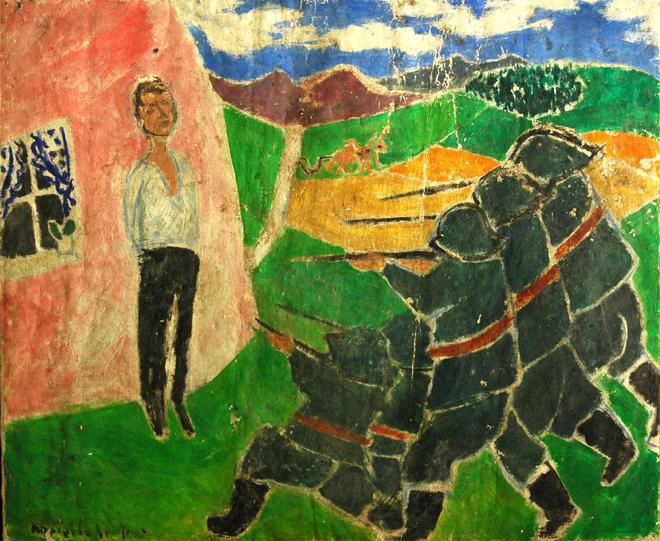
Rivier
Then there was Marcelle Rivier (1906-1986). She was a very exceptional personality. Born in Lyon she spent her youth in Argentina and worked as an assistant in an art gallery. Back in France she registered at the André Lhote Academy in Paris, supporting herself by working as a part time model as well as a dancer in a music hall. In 1935, Marcelle Rivier joined André Lhote in Mirmande and from then onwards returned to paint there for a period of six months every year. A photo dating back to those times shows a petite and pretty woman with strong features and a determined look. Her paintings are a riot of colours and the forceful brushwork is flexible and free. During the German occupation of France her combative spirit and her courage led her to join the Resistance as a liaison agent. She did not hesitate to hide clandestine radio operators at her home ensuring contacts with the British High Command. At the height of the battle of the Vallée du Rhône, she painted American flags on parachute fabric. When three young men were taken prisoner using a Red Cross pass she managed to have them set free. However, she herself was detained and taken away in a truck. Fortunately, a German colonel making his getaway ordered her to step down so that he could take her place. At the end of the war Marcelle Rivier was decorated with the Croix de Guerre in acknowledgment of her underground activities. True to her strong temperament and also perhaps to wipe away the traces of the occupation years she destroyed all the paintings that she had made during this period, with the sole exception of one that refers to Goya’s famous “Tres de Mayo” as it pictures a member of the resistance facing a German firing squad. It is now part of the collection of the “Musée de la Résistance.” Marcelle Rivier’s statement about herself is hardly surprising: “I paint because there is a volcano in my heart!”
Fedor Löwenstein (1901-1946) was a Czechoslovakian Jew, one of the many foreign artists who joined the famous Ecole de Paris. At the beginning of the war he left the French capital to come to Mirmande where André Lhote welcomed him. For a short time thanks to the protection of the Resistance he found a shelter at the monastery of Aiguebelle. In Mirmande Fedor Löwenstein also developed a passionate love affair with Marcelle Rivier, but due to a serious illness and despite the danger to himself he was forced to return to Paris to undergo treatment. An extensive correspondence ensued between the two lovers (published) that would continue up until Fedor Löwenstein’s death in Nice in 1946. A shipment of his paintings for a New York gallery was seized in Bordeaux in 1940 and destroyed as, according to Nazi criteria, it contained “decadent” works. Only three beautiful abstract cubist works – all censured with a red cross – were salvaged and are now preserved by the Centre Pompidou in Paris.
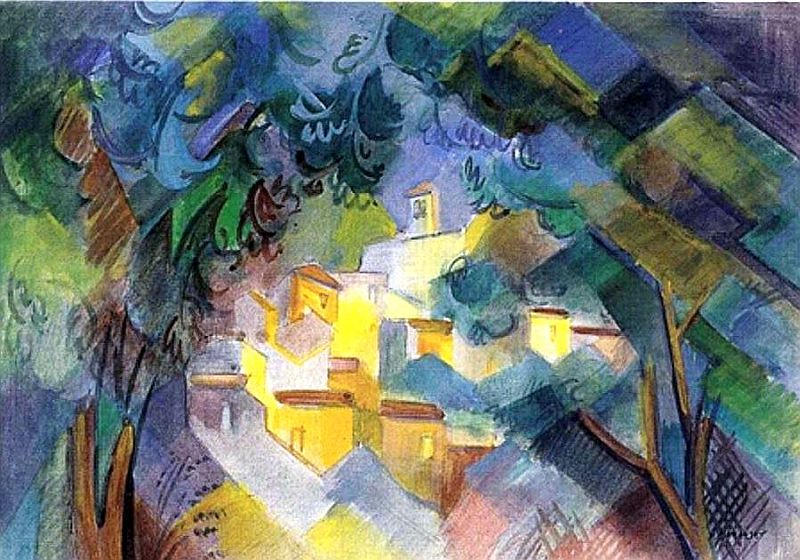
Marandet
Guy Marandet (1917-2011) first joined André Lhote in 1934. From then onwards and during the entire war he returned to Mirmande every year. Guy Marendet’s work both as a painter and a graphic designer was strong and original and quite clearly influenced by the master. After retirement he settled for good in Mirmande and acquired a ruin at the top of the village which took some 30 years to restore. Every summer, students came together in his studio to follow his courses based on the teacing’s of André Lhote.
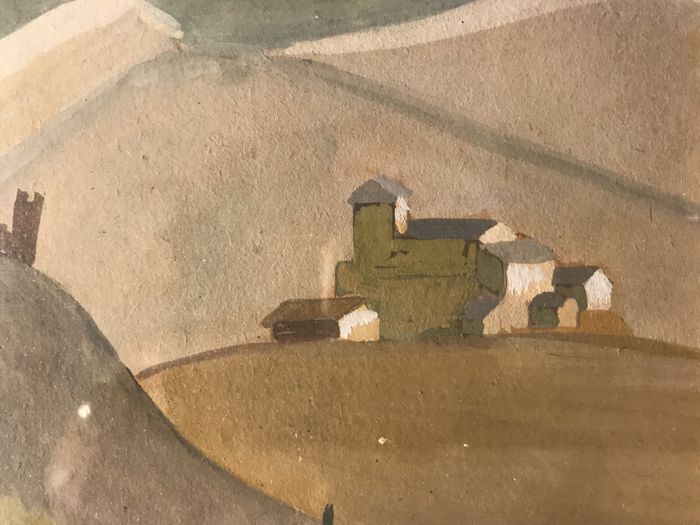
Loopuyt
Although she cannot be classified I would also like to mention the Dutch painter Mena Loopuyt (1902-1991). She was one of those non conformist painters who chose to live in Cliousclat, the neighbouring village of Mirmande. A familiar figure in the circles of André Lhote she did not however adopt Cubism. In the words of her good friend Florian “Mena Loopuyt never ceased to keep, be it in a kindly way, her distance from the many restless aesthetic stirrings of her times that she always liked to consider with a fair dose of humour. She created her artwork on her own, all alone like The Poet within the society of her times.” The distinctive aspects of Mena Loopuyt‘s paintings are forcefulness coupled with ingenuity, and these qualities she very consciously entertained in order to express her immediate emotions. Her paintings are bright but interestingly they are not those of the South of France but of the traditional earthen Flemish palette. They are those of the painters of her homeland, from the provinces of Groningen and Friesland in particular.
The paintings of Mirmande and its surroundings by André Lhote and his followers, “les peintres de Mirmande” as they liked to call themselves, have the bright and joyous colours inherited from their Fauve forerunners. A visit to Mirmande which has acquired the label of “Les plus beaux villages de France” proves the point. After a steep climb through a labyrinth of alleyways to the Renaissance church of Sainte Foy that tops the hill, the view is breathtaking, and every single element in the landscape illustrates to a T what makes the Drôme so beautiful.
Posted in: Art
